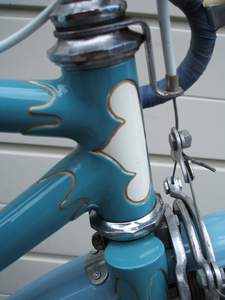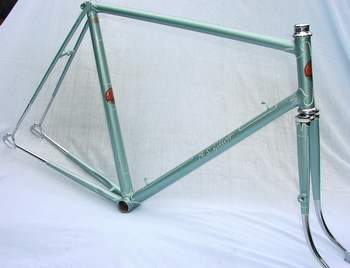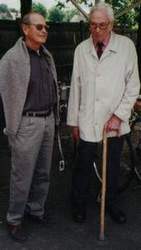Gillott, A S
Posted: Thursday 21st May 2020
In the last years of the 1939-45 war Harry Carrington, Manager at A.S.Gillotts, was carefully planning ahead. He foresaw a big demand for cycles and wanted to be able to supply the best. With this in mind, he was in contact with Jim Collier who was employed on war work at Woolwich Arsenal, Jim had been a master framebuilder at Hobbs of Barbican before the war and was desperate to escape the drudgery of working at the Arsenal. In the closing weeks of the war it became possible for Jim to leave as long as he had another job to go to. As a result, the very day war ended in May 1945 Jim began framebuilding for Gillott at Southampton Way, London. Harry had acquired some stock of tubes and lugs before the war so they were able to make about 20 frames in the first year. As demand increased Harry took on more staff, always monitoring employees by keeping a close eye on the quality of their work.

Bill Philbrook joined Gillotts in 1946, he was born in Sydenham and had been employed at Buckleys of Forest Hill in the pre-war years. Harry took on several other frame builders as well as a young apprentice called Ron Cooper. Ron showed a natural aptitude with the torch after being tutored by Bill and also by Len Hart who specialized in fillet brazing and after a couple of years had taught Ron the complex art of building bi-laminated frames.
Harry was expanding the business now as he had a 49% control which he had negotiated with Arthur Gillott, who was in poor health at this time. A G spent most of his time in the Brixton branch in Atlantic Avenue, the address that gave the name to Gillott’s lugless model the L ‘Atlantique. A third branch was opened in Portsmouth so Harry spent a lot of time on the road fetching and delivering bikes and frames for repair as well as a weekly trip up to Vaughans in Birmingham for lugs, brackets and braze-ons etc. Tubes were from Accles and Pollock and Reynolds but A&P steerers were always preferred for some reason.
The fork crown is the R J B twin-plate named after Gillott worker Ron Brown. The Spear lugs and the R J B fork crown were used until 1958 when they were phased out. The taper seat and down tubes can be seen in the image. These were brazed into a specially produced bottom bracket shell which was designed to take the larger diameter tubes. When the stocks of these special bottom brackets ran out builders of taper tube frames took, out of necessity, to using brazed (welded) construction for the bottom bracket.
Posted: Thursday 21st May 2020
This article appears in the following categories.
Upcoming Events
Whether you are looking for a gentle social meet up, or a 100-mile ride browse the community’s upcoming events and plan your next weekend outing.



